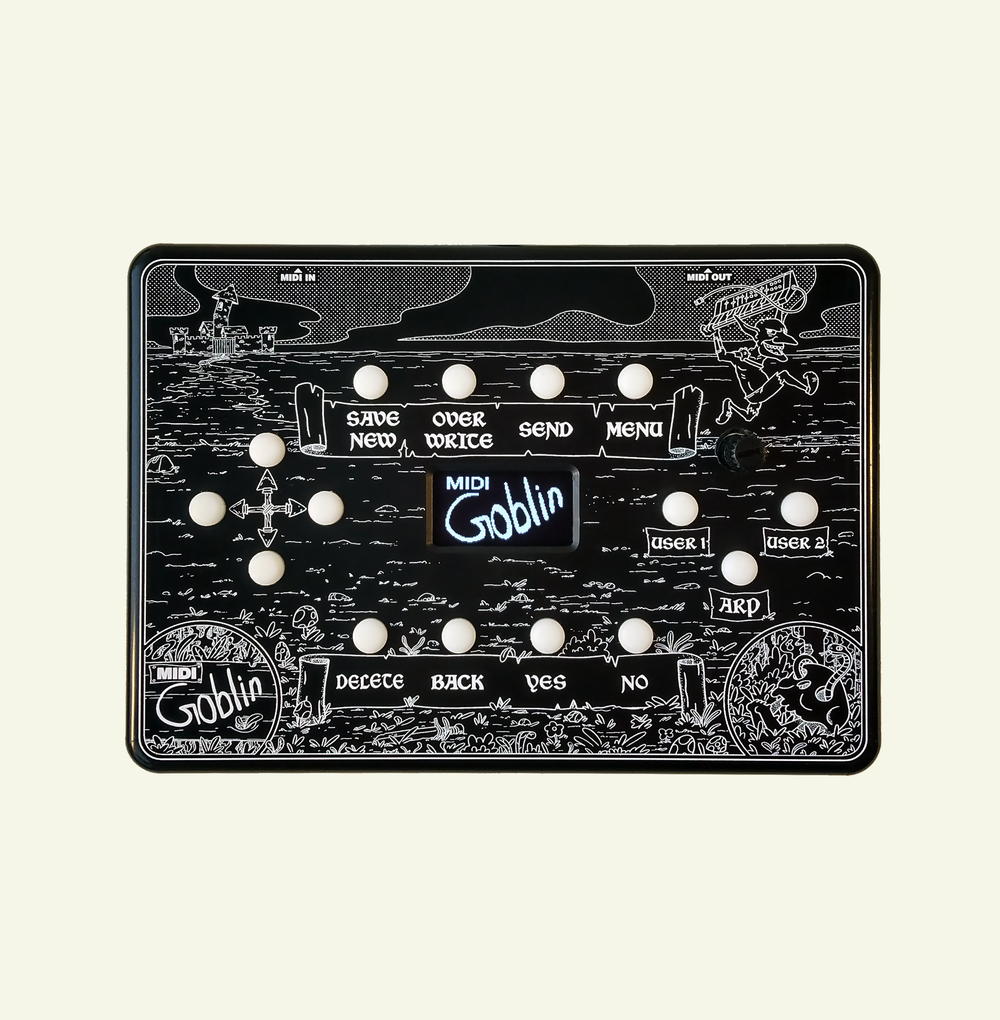Hi, I figure this would be as good as a place as any to post since Dave Smith is considered the father of MIDI.
Ive made a thing I'm calling MIDI Goblin.

It's a small, device with a little oled screen that allows users to save patches for user defined devices....meaning it can save patches for any synth that can transmit midi cc/nrpn messeges. Kind of like a really flexable hardware patch librarian.
You can also use it to name patches saved on your patch banks, then load them by name in any order....I think this is one of the most important features and intentionally made a demonstration video of this feature using an OB-6(seemed appropriate)
https://youtu.be/b2mmXqm7EgM?si=TNQ3wCG8QDNTiqqN
It also has an arpeggiator function for synths that lack arpeggiators but can transmit midi note on/off messeges.
https://youtu.be/o3MECXg4egk?si=Ur0VB9gb7m4gNb11
a chord generator that automatically plays major or minor chords and if you have extra voices, you can play over top of the chord. kind of fun!
https://youtu.be/ilWWinG82Yw?si=e0Ie0PGd34oWyhWK
There's also a MIDI CC lfo, that can emulate multiple waveforms (though i think the code for the sin and tri waves needs to be re-worked...they sound very similar)
https://youtu.be/kYRZSHwCrT0?si=HpW0ADRefpC0dm-j
You can remap MIDI CC messeges. This could be really handy for old midi controllers...Also it allows you to remap your synths midi cc values so you can program one synth with another (and the MIDI Goblin can save the patch data as well)
https://youtu.be/1MoVUvOhgV8?si=aqw6_IIGvKcXENxq
It also has a scale thinger... its really fun sounding. press a note, a major or minor chord is played as an arpeggio
https://youtu.be/DGx0Gfwqn6E?si=jtxB9SAFH58b40KF
And it has a 32 step sequencer...suprisingly it was the easiest thing to program.
https://youtu.be/IesrHsNHoCQ?si=wTw4HIp9cpQi6i-v
The MIDI Goblin can be programmed using the Arduino IDE so if you want to use it for something entirely different its a pretty useful prototyping tool and I'm going to make the source code openly available too.
I think a lot of the features on the software side are handy. It does some stuff for assembling NRPN messages while filtering out message fragments that I'm pretty proud of.
I like the idea of something that returns an arp based off the chord or notes I play on the Prophet. How much is one of these costing? Not sure it will be useful but that is one thing I sort of could use, an Arpeggiator that takes MIDI in, and translates it to an arpeggio, then sends that arpeggio back out to something further along. Do you know this has always been impossible to achieve?
For instance, take the simple VST RandArp, from Code 42 (
https://codefn42.com/randarp/index.html ). This is a great little Arpeggiator to put on a track in a program like Live Professor II in front of a VSTi, because it will take notes sent into the chain from a midi device and turn them into an arpeggio that plays the VSTi. However, when you try to get an outputted ARPEGGIO (MIDI out) from the chain, that is being created by the VST, it is impossible to get one sent thru the MIDI out and sent to a further chain or a program with transport to record that MIDI created by the RandARP. Believe me I have tried. Though it was a couple years ago. As far as that time, there was never any way to record the MIDI from the RANDARP VST.
I'm not sure I use the 5 Pin MIDI in/out ports from the prophet actually or thru. I used to use them but maybe not anymore. Might just be a useful device.
 Recent Posts
Recent Posts